Cacti are one of the oldest plants on earth. Their homeland is considered South America, Mexico. These plants more often than other household flowers adorn the interiors of houses. Some of them are characterized by lush beautiful flowering, their juice is used for the manufacture of medicines, alcoholic beverages.
The edible fruits of cactus have long been used by the peoples of ancient civilizations as a staple food. Berries, stems of some cactus varieties are still eaten. At the same time, they not only benefit health, but also differ in good taste. Preliminary preparation of fruits requires a special approach, adherence to a certain technology, which any chef who has taken up the preparation of such dishes needs to know.
Content
The species diversity of edible cacti and their fruits
From time immemorial, the fruits of various representatives of the Cactus family have been used in cooking, both fresh and as components of various dishes. Most species do not have a pronounced taste. Edible cacti of some species are often the basis for the production of delicious jams, liquors, syrups, molasses. The most common types of this plant that you can eat are Opuntia, Mammillaria, Hilocereus, Selenicereus, Schlumberger.
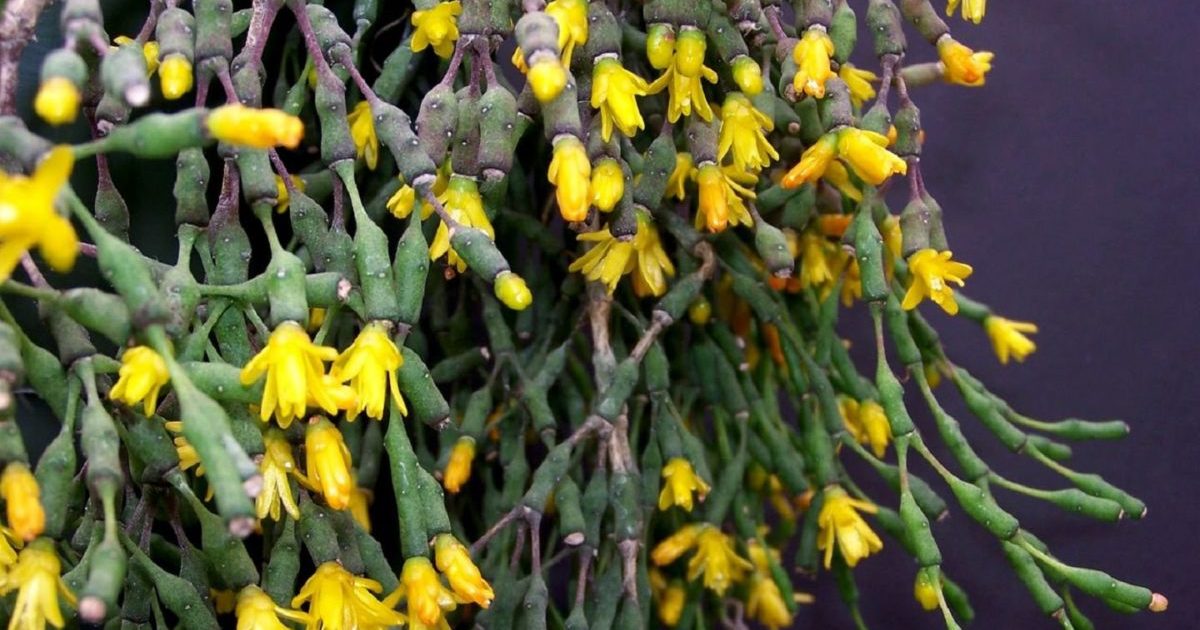 You may be interested in:
You may be interested in:What is fig prickly pear
An exotic Cactus plant with red fruits that are used in cooking for preparing various dishes is called Indian fig, fig, prickly pear, Indian prickly pear or fig. This species is distinguished by fruits with tasty juicy pulp. Having a Mexican origin, this plant has become widespread. Today, the flower can be found in the countries of the Mediterranean, Brazil, Chile, Crimea.
Thus, prickly pear is the most popular edible cactus. The fig variety is an upright shrub that forms flat stems. During flowering, single large flowers appear. The stems of the plant are covered with microscopic transparent hooks (glochidia), outwardly resembling a fluff.
When ingested, they can cause pathological changes that result in death. In case of skin contact, allergic reactions occur. Today, cactus is used in cooking, as a feed crop, as a raw material for the production of dye. This plant contains a large number of useful substances, vitamin C, therefore, not only fruits are consumed, but also stems and even flowers.
Mammillaria
This cactus variety is distinguished by its edible fruits of various species and forms, which can grow throughout the year along with flowers. They have a sour taste when consumed raw. They make delicious jam. A distinctive morphological feature of this plant is the presence on the stem of numerous papillae, from the tops of which needles grow. In the sinuses between the needles, flowers appear.
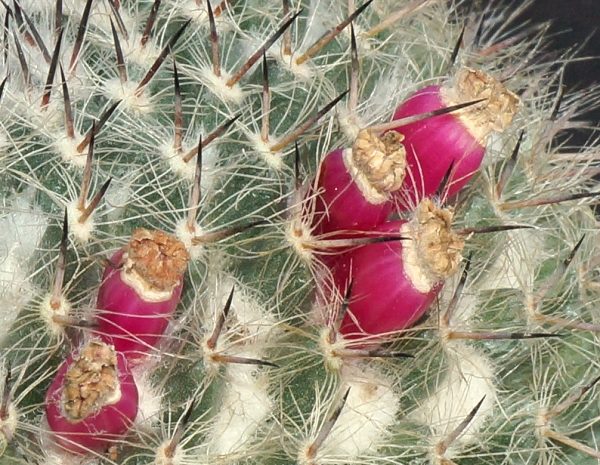
Mammillaria can be oblong, round, in the form of a disk or a ball. The plant consists of a prickly and lowered part, on which red, white or yellow flowers bloom. A characteristic feature of the flower is a developed root system. Fleshy thick roots - this is his calling card.
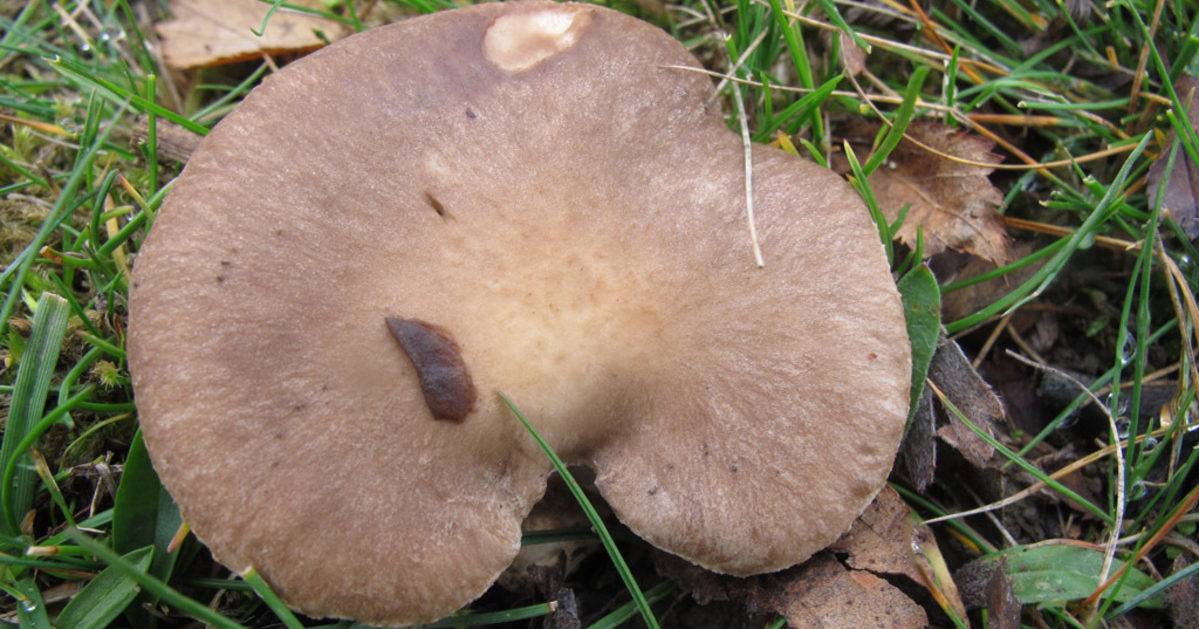 You may be interested in:
You may be interested in:Gilocereus
This epiphyte in the wild is found in Vietnam on tree trunks. Hilocereus eats rotted leaves and dry branches. Its distinguishing feature is large flowers. The fruits of this plant are called pitahaya or pitaya. They have a characteristic raspberry-colored skin with green scales and white flesh. Pitahaya is quite large. Its weight can reach one kilogram.
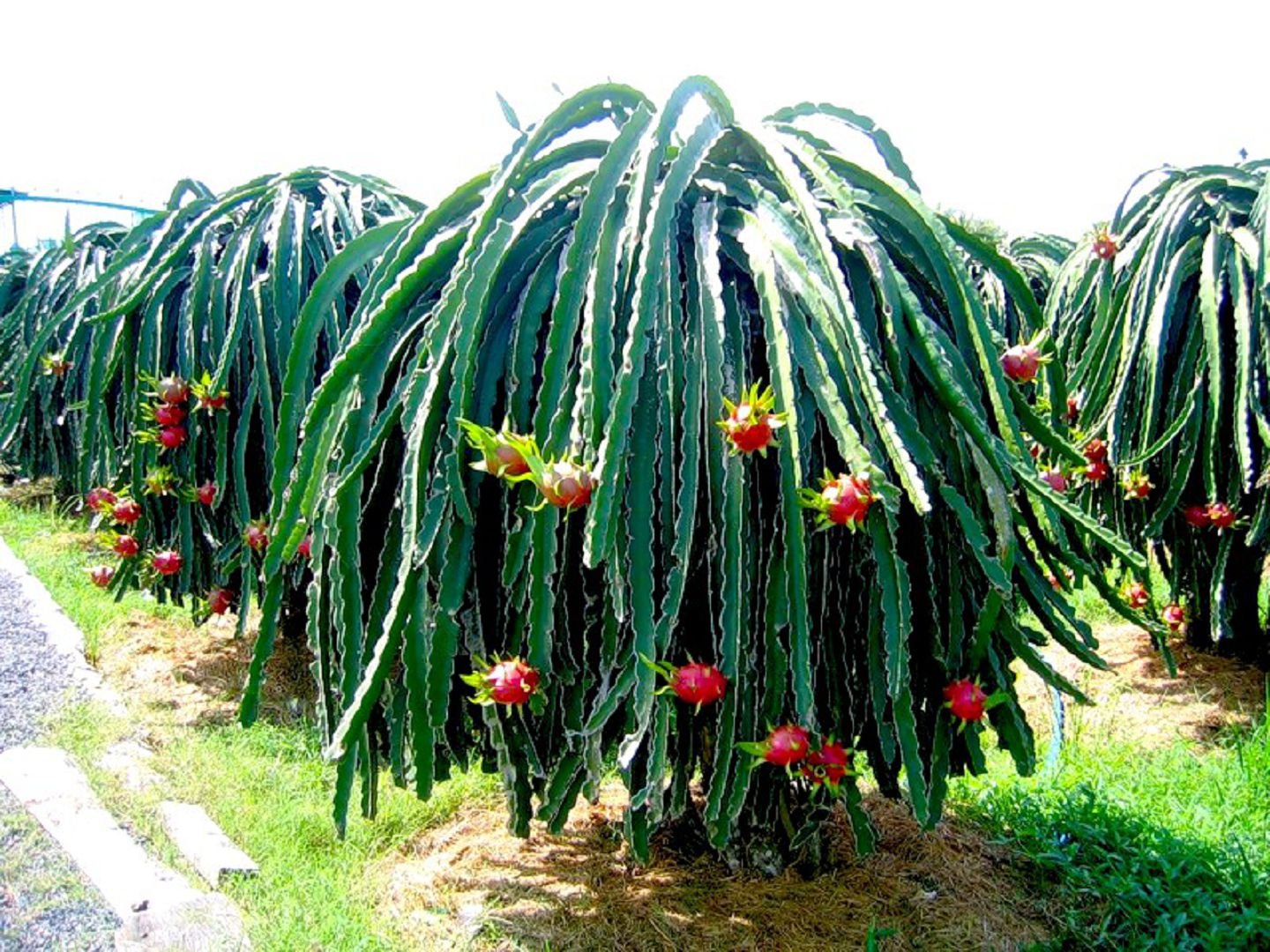
The fruits of this cactus are characterized by good taste and beneficial properties, so this culture is grown on an industrial scale. Due to their saturation with vitamins and minerals, they are recommended for hypertension, diabetes mellitus, high blood cholesterol, and digestive disorders. Cactus is characterized by high productivity. When creating normal conditions, it bears fruit 5-6 times per year. The largest exporters in the world are Thailand and Vietnam.
Selenitereus
The name of this species from South America translates as "Queen of the Night." Aerial roots, thin shoots are the distinctive features of a cactus. In addition, this plant is characterized by very large royal flowers that bloom exclusively at dusk.
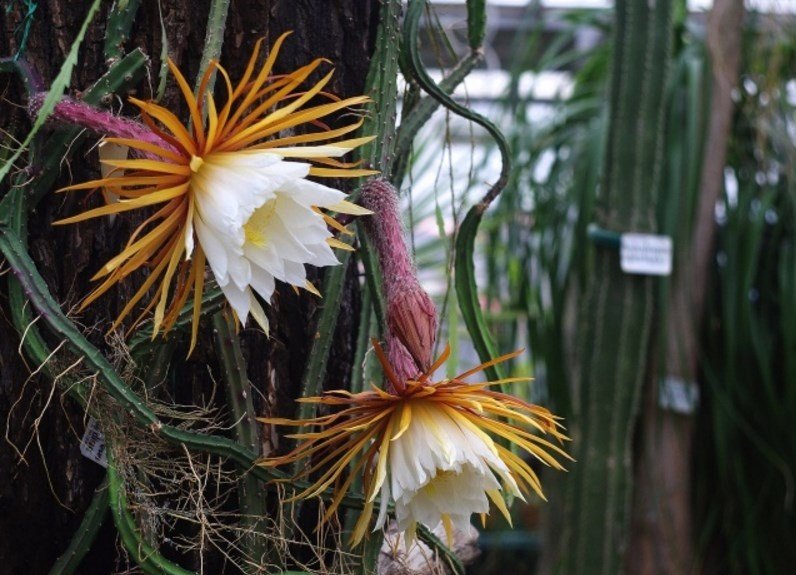
Before the first rays of the sun, they close. As a result of flowering, purple ovoid fruits are formed. They are characterized by juiciness, pleasant aroma and pronounced taste. For eating, it is cut into two parts and enjoy a delicious healthy fruit.
Schlumbergera
This representative of epiphytic plants is called zygocactus, which means “rocker”. It received its main name in honor of the French lover of flowers of cactus breeds. This species comes from the rainforests of South America.
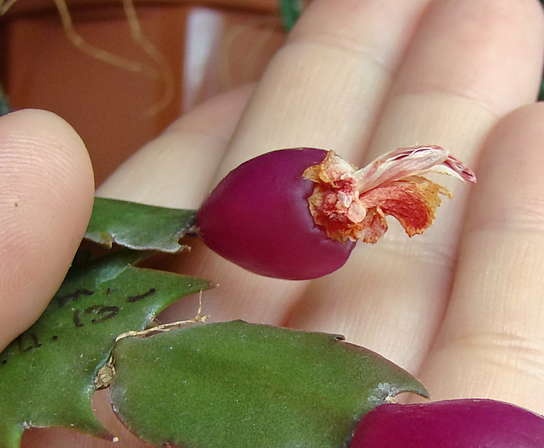
Its stems consist of small flat segments with pointed edges. The plant blooms at the beginning of winter, delighting gardeners with beautiful flowers, white, pink and red. The plant bears fruit in December, producing juicy fleshy fruits that look like apricots in shape.
As there is fig prickly pear, or Indian fig
For preparation, fig stems are used, which in young plants have a cucumber taste. They are added to salads, first and meat dishes, liquors. Marmalade, jams and preserves are prepared from such products. In addition, they are consumed raw. Before you have fig prickly pear, you need to properly prepare it.
Stretching needles
Already in the store when buying fruits you can not take them by hand. For this, special devices are intended. At home, when disposing of needles, it is recommended to use durable thick rubber gloves. The fetus itself needs to be fixed with wide forceps.
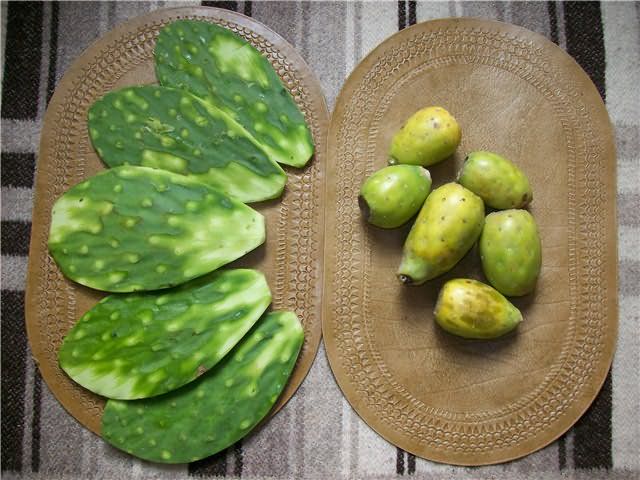
After that, thoroughly wipe its surface using a dense fabric folded several times. In some cases, you can freeze Opuntia and then just shake off the needles. To get rid of them, you can use open fire.
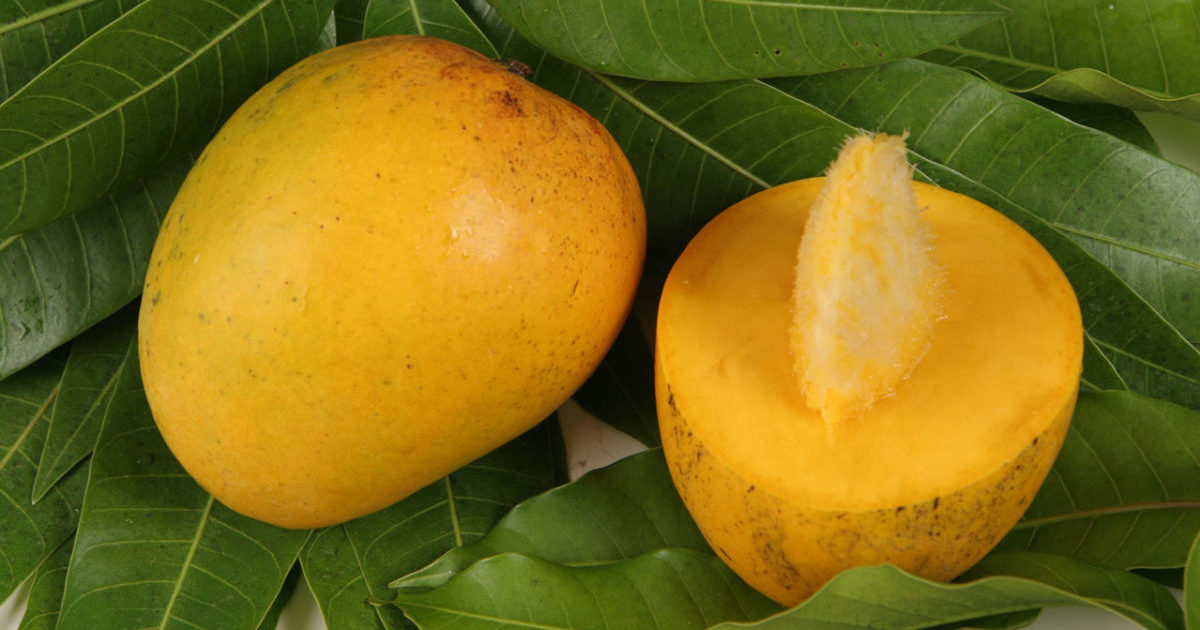 You may be interested in:
You may be interested in:Peeling
The outer skin is characterized by stiffness, density and large thickness, so you need to get rid of it. To do this, it is better to use a sharp knife.
The whole skinning process consists of three steps:
- First you need to cut off the opposite ends of the fetus.
- Make a neat longitudinal incision along the entire length.
- Take the ends of the skin on both sides, pull and peel off.
The taste of fruit
Depending on the variety, prickly pears are different in taste and aroma. Despite the fact that different fruits may be acidic or sweeter, their common characteristic is juiciness and wateriness. They are enjoyed with pleasure in countries with a hot or cool climate.
This product perfectly quenches thirst, so it is often used to prepare various drinks. The pulp in its consistency resembles grapes, since small bones are present in it. They can also be chewed and eaten. A unique feature of the fruit is a special sour taste. To taste, they are often compared with strawberries, kiwi or pear.
Opuntia recipes
The fruits, stems, leaves of this plant are rich in taste, so they are used to prepare various dishes. Pieces of prickly pears are stewed with meat, boiled, fried, marinated, baked in the oven. For cooking, young leaves are most often used, which are carefully cleaned with a knife from needles, washed.
The easiest way to cook scrambled eggs with prickly pears. To do this, deciduous cactus pads are crushed, and then fried in a pan. You can use butter or vegetable oil. After driving in two chicken eggs, salt, sprinkle with grated cheese on top.
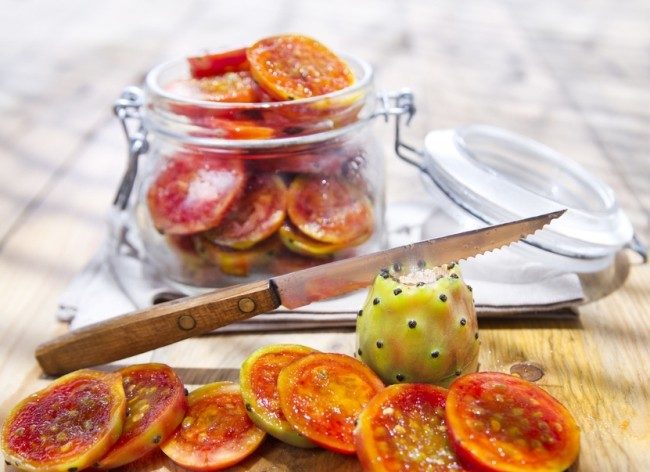
For the preparation of marmalade, the flesh of the prickly pear fruit is used, which must be crushed by rubbing it through a sieve.
The following ingredients should be used in this recipe:
- cactus puree - 400 g;
- dry seasoning for salads - 1 tsp;
- gelatin - 1 tsp;
- sugar substitute (stevia) - ½ tsp;
- water - 50 g.
Step by step recipe:
- Heat the dried pulp of the prickly pear to a boil over minimal heat. At the same time, it must be constantly stirred.
- Dissolve gelatin in hot water. Add the solution to the pulp, bring everything to a boil.
- Add the remaining ingredients, mix thoroughly. Cool the mixture, pour into silicone molds, place in the refrigerator.
Useful properties of cactus fruits, contraindications and possible harm
Today, almost all parts of the plant are used. Fruits, stems are eaten, various cosmetic products are made from them. They are characterized by a high content of vitamins, minerals, and other beneficial substances. Berry seeds are processed into flour or butter, and flower petals are used as tea leaves. In addition, glue and dye are made from cactus.
Fig shoots are used to treat diarrhea, gastritis, and stomach pain. Being a source of iron, phosphorus, calcium, dietary fiber, pitahaya stimulates the functioning of the digestive system, helps with diabetes, hypertension, and lowers blood cholesterol.
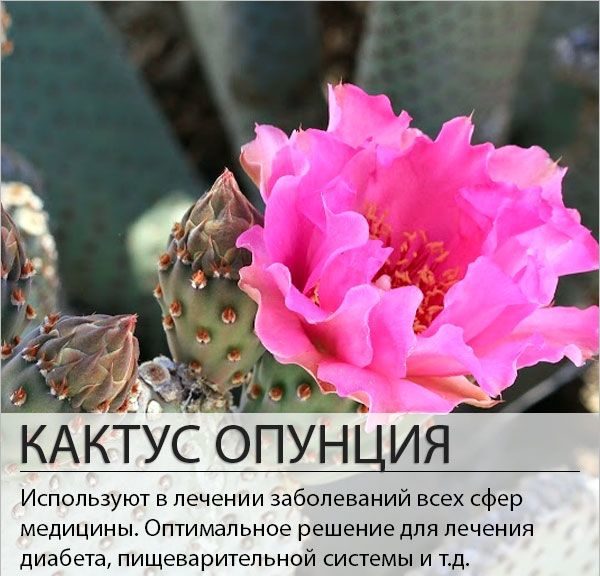
Since ancient times, the inhabitants of Central America have used lophophore cactus powder to treat ulcers and wounds. This plant helped with snake bites, cramps, cramps, neuralgia. Due to the saturation of vitamin C, the use of this exotic product helps to increase tone, immunity. Cacti used in the treatment of colds, to reduce body temperature.
Edible cacti in small quantities can be eaten without any problems.On the other hand, abuse can cause allergic reactions, nausea, vomiting, constipation. A threat to health is posed by microscopic transparent needle-like spikes covering their surface. Their direct contact with the skin can cause swelling, inflammatory reactions. Of particular danger is the interaction with the mucous membrane, so when kept in the house it is important to protect young children from access to the flower.
The main contraindication to the use of cactus is individual intolerance. It can manifest itself in the form of a red or pink rash, headaches, nausea. Cactus fruits activate metabolic processes, therefore, they can adversely affect chronic pathologies of the kidneys, urinary system, hemorrhoids. Thus, the use of this product can exacerbate these diseases. To avoid negative consequences, in such cases it is better to abandon the use of edible cacti.
Common questions
Edible cacti are a valuable product containing the most important vitamins, trace elements, nutrients. Fig prickly pear can be grown at home. Plant care consists in regular watering and top dressing. On the other hand, at home, representatives of the cactus family do not bear fruit and practically do not bloom. The disadvantage is also rapid growth, loss of decorativeness.

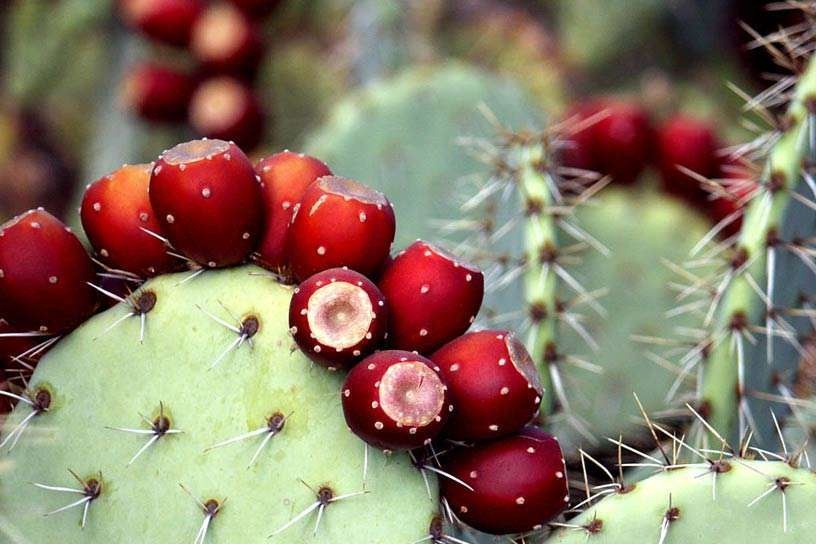
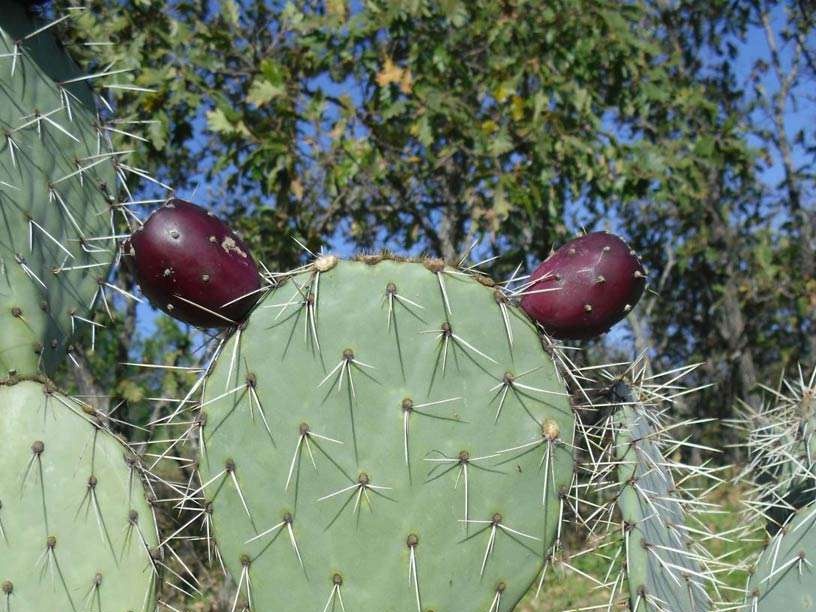
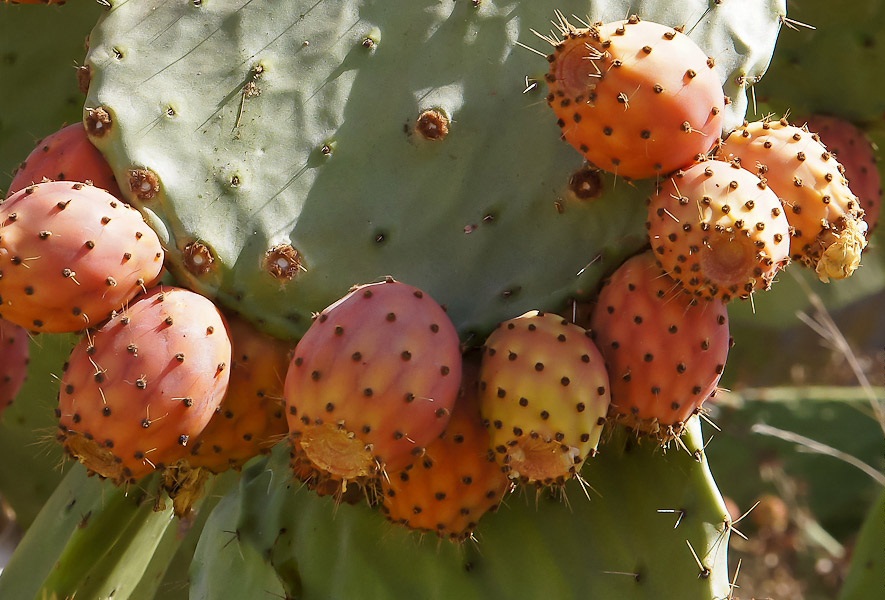



 10 beautiful annuals that bloom all summer
10 beautiful annuals that bloom all summer Sow in the ground, without seedlings: 10 beautiful and unpretentious flowers
Sow in the ground, without seedlings: 10 beautiful and unpretentious flowers Platicodon planting and outdoor care
Platicodon planting and outdoor care Hosta - planting and care in the open ground in the Urals
Hosta - planting and care in the open ground in the Urals